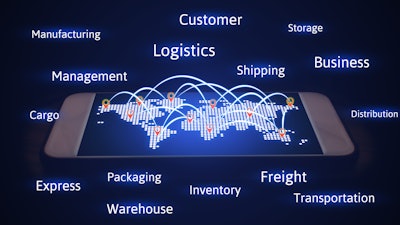
Numerous forces drive a manufacturer’s need for greater visibility across the supply chain. Global demand and supply chain networks naturally include distance, cultural, time-zone, tariff, geopolitical and other types of challenges. As a result, it’s difficult to proactively monitor supply chain disruptions and respond quickly in a cost effective manner.
Additionally, manufacturers are focused on cutting supply chain costs and improving cycle times while meeting customer expectations. Ongoing mergers and acquisitions result in further complexity with each new division operating in a silo and unable to leverage economies across the organization. These challenges make it difficult to see what’s happening in your global supply chain in real-time, resulting in poor supply chain performance and undermining the ability to meet customer demands.
Supply chain visibility is a hot topic for many manufacturers, especially those that currently rely on outdated processes or have overlooked the importance of rapid access to supply chain data for delivering global supply chain performance improvements. Supply chain professionals constantly seek quicker access to a single source of truth that allows manufacturers and supply chain trading partners to make decisions based on the same set of information.
This is unlike the scenario where manufacturers rely on manually intensive efforts to exchange supply chain information, or where supply chain data resides across multiple technology systems. In both cases, more agile and effective collaboration strategies result in accessible and actionable information across the network. With greater access to real-time supply chain data, manufacturers and their trading partners are in a better position to deliver innovative products, drive critical supply chain processes and ensure a positive customer experience.
Growing Global Supply Chain Risks
The ever-changing nature of global supply chains makes effectively managing demand, supply and various trading partners more complex. Working in multiple languages, meeting various country regulations, responding rapidly to changing tariffs, addressing demand spikes, reacting to unexpected supply disruptions along with other factors can all keep supply chain professionals awake at night.
Relying on manually intensive supply chain processes without real time visibility increases risks throughout the supply chain. Given the size and global scope of supply chain networks along with the variability of responses that occur at different supply chain stages, manufacturers must move beyond transactional visibility approaches to more advanced solutions with actionable intelligence.
Visibility is an inherently multi-enterprise, collaborative process that requires bringing together large amounts of data to make the right strategic, tactical and operational supply chain decisions. As a supply chain professional, one of the goals is to better connect the dots across multiple enterprises and functions to gain comprehensive visibility over the entire value chain from the supplier’s supplier through to the end customer.
This level of visibility provides manufacturers with greater awareness of potential disruptions including variable demand spikes from customers, missed deliveries by suppliers, quality defects, international shipments held by Customs and many others. Visibility effectively connects key partners to improve supply chain performance and allows manufacturers to rapidly and cost effectively respond to the unexpected supply chain disruptions that occur on a daily basis.
Manufacturers rely on global supply chain trading partners that vary in strategic importance, size, technical sophistication and communication capabilities. These partners include customers, suppliers, carriers, Customs brokers and others. Visibility effectively connects key partners and allows manufacturers to maximize revenue by decreasing out-of-stocks, and helps to ensure products are available and delivered to customers in the timeframe promised.
Manufacturing ERP and other technology solutions can also eliminate many manual processes with global trading partners, which enable manufacturers to improve operational efficiencies and respond immediately to unplanned supply chain disruptions. One of the challenges for supply chain professionals is to sift through the overwhelming data that the supply chain can provide.
So, while greater visibility leads to improved supply chain performance, a phased approach to visibility addresses your organization’s priorities. Depending on your company’s supply chain priorities, visibility can help to reduce inventory levels, eliminate product shortages, improve demand and supply forecasting accuracy and allow for more proactive responses to supply chain issues.
Supply chain visibility is a game-changer for enhancing data integrity across your supply chain to ensure responsiveness and real-time collaboration. As a result of transforming supply chain visibility, manufacturers can achieve a single source of truth, improve decision making and boost global supply chain performance.






















